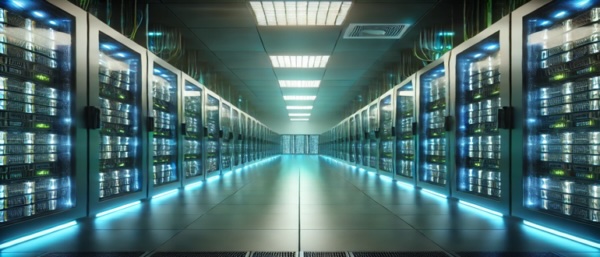
IBM has released the newest version of its LinuxOne mainframe series—a machine format first popularized by IBM in the 1960s—with a set of specs built for today’s artificial intelligence- (AI) driven tech infrastructure.
The LinuxOne Emperor 5 mainframe contains the Telum II processor, a chip with the robust processing power to handle an impressive 450 billion AI inference operations in a single day.
“The unveiling of the IBM LinuxOne Emperor 5 marks a significant step in IBM’s ongoing evolution within the hybrid cloud landscape and also a continuation of a 25-year journey with Linux on the s390x chip architecture,” wrote Steven Dickens, CEO of HyperFRAME Research, in an article. “IBM is focusing this new server to cater to enterprises grappling with the complexities of modern IT, where the need for robust security, exceptional performance, and seamless integration across diverse environments is paramount.”
IBM’s Telum II chip is built with a second-generation on-chip AI accelerator. The Telum is fabricated using Samsung’s 5 nm process technology and contains eight cores running 5.5GHz, which gives it a 40% boost in cache size over its earlier version. The Telum’s AI accelerator boasts 24 trillion operations per second.
To support Telum II’s generative AI capability, the Emperor 5 includes the IBM Spyre accelerator (planned for Q4 2025 availability via PCIe card). The Spyre can handle not only a variety of AI model types but can also boost the predictive capabilities and processing accuracy in uses cases like automation for retail, image processing and fraud detection. The Spyre contains 32 accelerators with a design that matches the accelerator built into the Telum chip. And for businesses that need it, the system can be configured so that several Spyre accelerators support a single Emperor 5.
The Emperor 5 was designed with an eye toward supporting scalable AI deployments, including predictive AI applications and large language models (LLMs) that require high volume transaction processing. An on-board application, the AI Toolkit for IBM LinuxOne, was revised to provide the enhanced performance for the Telum II.
Also on board is software built to optimize AI use cases. The Emperor 5 includes Red Hat OpenShift AI (currently in technology preview), which provides enterprise users the ability to use vLLM runtime templates even when AI models are deployed in standard mode. Running alongside OpenShift AI is OpenShift Virtualization, an application that enables users to manage both containerized workloads—ideal for a cloud-native environment–and traditional virtual machines using a single interface on the OpenShift Platform.
In keeping with AI’s move toward open source—and IBM’s long preference for open source—a sizable community of open source developers and ISVs works to develop advanced applications to enable modernization and AI innovation for the LinuxOne series.
Even in the Emperor 5’ security architecture, AI is kept mind—essential since customized AI models typically contain levels of confidential data. The mainframe’s confidential containers enable data protection for use in AI models and other use cases, supported by the OpenShift Container Platform.
The Emperor 5 is designed with a zero trust focus and geared to operate with compliance regulations. It contains NIST-standardized quantum algorithms, confidential computing tools, robust crypto bandwidth and hardware security to guard against threats like harvest-now, decrypt-later hacker attacks.
While certainly not inexpensive, the Emperor 5 offers cost advantages, as IBM describes it. If, for instance, a customer were to migrate cloud-native workloads from an x86 platform to the Emperor 5, operating the same applications would save up to 44% of the ownership costs over 5 years. The machine is architected for 8 9’s of availability, which is close to the ceiling that any manufacturer promises.
In sum, the Emperor 5 is a mainframe built to support the technology that drives 2025—generative AI. Clearly the mainframe has come a long way; today’s iPhones are far more powerful than the basic mainframes of the 1960s. Yet as the Emperor 5 demonstrates the mainframe is a durable machine format that has continued to evolve and even now plays a leading role in next generation technology.

